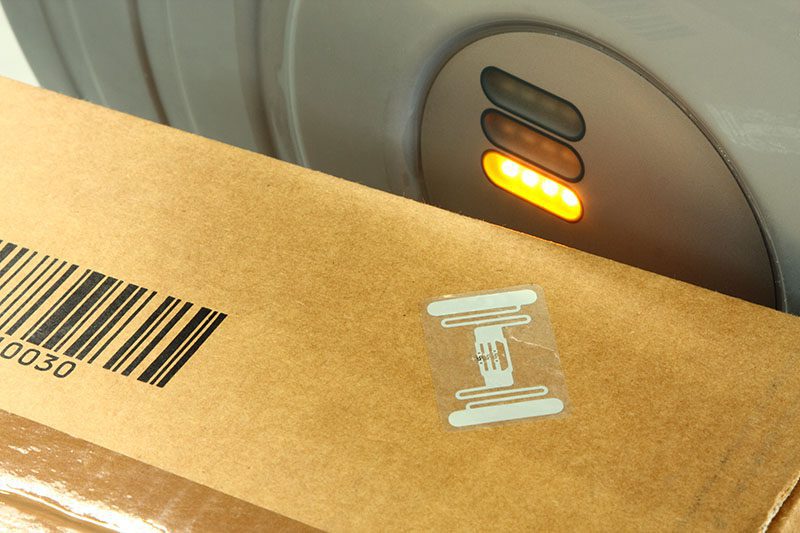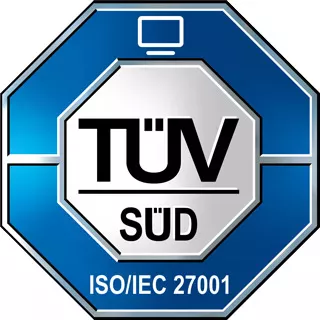Reevaluating the Role of RFID for Postal and Logistics
The market for e-commerce, especially global and cross-border, continues to grow. At the same time, the challenges of last-mile delivery are becoming more complex. Modern tracking systems such as Live Tracker are becoming increasingly important because they make complex global logistics processes traceable. They also promise end-to-end visibility in real time. It seems that the advantages of proven technologies are slowly disappearing. This trend begs the question: Do technologies like RFID still add value to postal and logistics companies?
Specific Functionality of RFID Technology
In order to approach this question, a description of the general functionality of the technology is necessary. RFID technology (Radio Frequency Identification) uses electromagnetic fields to transmit data within transmitter & receiver systems without having to make any physical contact. So called transponders (also known as tags) are essentially comprised of a microchip and an antenna. The microchip is used to store electronic information, such as an identification number or a product code. Reading devices, or readers, are able to scan and automatically identify objects that have been equipped with transponders. Unlike bar codes, transponders don’t have to be held under the readers to be registered, enabling the full integration of transponders into various objects.

Example: Letter and RFID tag
Passive transponders are supplied with energy through electromagnetic induction as long as the source isn’t further than a couple of meters away, providing it with enough power to transmit data stored on its integrated microchip. For distances up to several hundred meters, active transponders with an integrated power source (battery) are used.
An RFID system is made up of two parts, the first one being an immobile or mobile reader. The second part is a transponder, which can be flexibly adapted to the object’s size and shape. Immobile RFID readers are often created in the form of a gate. Mobile readers are typically portable, handheld scanners.
Advantages of RFID over other tracking systems
Due to their very small size, RFID tags can be integrated easily and flexibly almost anywhere – even in goods, merchandise or other objects. This results in a wide range of applications in various industries, also including postal & logistics and healthcare. In addition to their small size, the low costs make the transponders a very attractive tracking solution.
No visual contact is required to capture data from transponders, and they also don’t have to be placed in any certain way. Moreover, information can be recorded from up to several hundred meters away – much further than possible with bar codes. Unlike other tracking solutions, several hundred transponders can be scanned in bulk at a time, saving time, and therefore money. It takes a few seconds to obtain all relevant information in a Real-Time Performance Management Cockpit, including detailed insights on the whereabouts from the tags at the different RFID gates.
Compared with other tracking solutions, RFID technology is also immune to optical damage. Bar codes, for example, are difficult to read when they are covered by another object, contaminated with dirt, or simply through wear and tear. In contrast, the electromagnetic waves from RFID even break through wood and cardboard. This beneficial aspect reduces read errors and minimizes manual data entry. The technology even reacts reliably to strong environmental influences and a rough environment.
A further advantage of RFID technology is the writable capacity of the microchip in the transponder. In addition to being assigned a distinct ID, additional information can be stored directly on the transponder, even when the transponder and object are already in the middle of the process flow. Thus, in contrast to technologies like Live Trackers, for example, RFID is able to transfer complex data.
Usages of RFID Technology in Retail and Logistics
RFID technology has been an integral part of merchandise logistics for years. Single items, pallets, large boxes and containers can be equipped with transponders and automatically identified when they move through gates, allowing for an unimpeded flow of goods. This process opens up a number of possibilities, including the measurement of the volume of goods, or the transfer of comprehensive data sets, such as product characteristics stored on the transponder. Multiple measurement points can also be used to track goods along the logistical chain in order to determine accuracy and timeliness. RFID gates are often used to track the movement of goods in and out of warehouses, for inventory purposes, to track and control the process flow, manage production, and for picking orders.
RFID Technology in Postal Logistics for Enhanced Process Transparency and Performance Metrics
“You can’t manage what you can’t measure” – Peter F. Drucker
The described advantages of RFID for postal logistics are specific features which other tracking systems do not offer. Therefore, the usage of this technology is still up-to-date, and corresponding solutions in the postal & logistics sector benefit from a special added value. With RFID, postal service providers get a detailed view of their own processes and thus an unprecedented transparency. By installing appropriate measurement points along the process chain, such as at the entrances and exits of sorting centers, in hubs, and at logistics partners, advantageous opportunities arise for collecting important key performance indicators.







